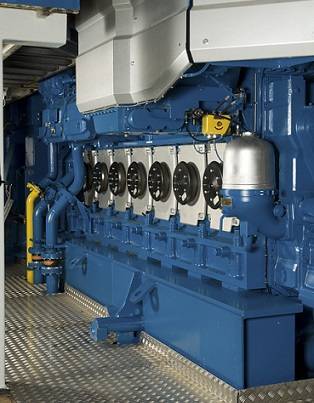Wärtsilä 34DF Recieves U.S. EPA Certificate
Wärtsila obtained certification of emission standard compliance from the United States Environmental Protection Agency (EPA) for its Wärtsilä 34DF dual-fuel engines. It will enable Wärtsilä to strongly enter the American market with marine engine technology that offers operators and owners the option of using either diesel or gas as fuel. The certification was obtained on January 17, 2013.
"The Wärtsilä 34DF is the first dual-fuel engine fulfilling the EPA requirements, and this is a very important statutory recognition of Wärtsilä dual-fuel technology," said Andrea Bochicchio, Director, Product Management & Engineering, Product Center four-stroke, Wärtsilä PowerTech.
With the passing of this compliance milestone, Wärtsilä anticipates that market demand in the U.S. for its range of dual-fuel engines will further increase. The first engines will equip the Harvey Energy, an offshore supply vessel built for Harvey Gulf International Marine. Four sister vessels will shortly be supplied with the same Wärtsilä engines, thus further demonstrating both the viability of liquefied natural gas (LNG) as a marine fuel and its growing popularity among ship owners and operators. LNG fuelled vessels offer compelling operational cost savings and significant environmental benefits.
"Economic and environmental factors are having a tremendous impact on the shipping industry, and at Wärtsilä we firmly believe that flexible fuel options are a positive step in alleviating these challenges. Our dual-fuel engine technology enables environmental legislation to be met where necessary, while maintaining the ability to use conventional diesel fuel in unrestricted areas," said Giulio Tirelli, Director, Wärtsilä Ship Power, four-stroke Portfolio and Applications.
EPA certification applies to United States flagged vessels. The Wärtsilä dual-fuel engine capability enables ships to be operated on either conventional liquid marine fuels or LNG. The switch between fuels can be made seamlessly without loss of power or speed. Such fuel flexibility enables compliance with emission regulations in controlled areas, while giving operators the option of determining the fuel according to cost and availability.
www.wartsila.com











